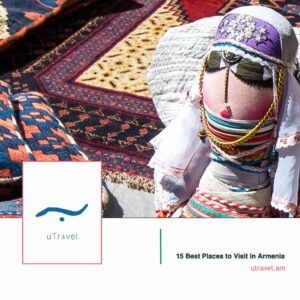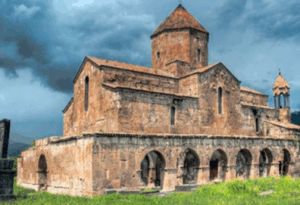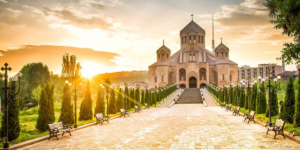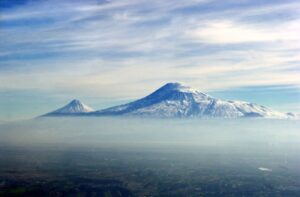15 Best Places to Visit in Armenia
Table of Contents
Armenia is one of the popular tourist destinations in the Caucasus, with a small but beautiful nation. Let’s explore the 15 best places to visit in Armenia!
Armenia was the first country to declare Christianity as its national religion. The Ararat mountain is Armenia’s national symbol is considered holy by residents due to its mention in The Bible – the place where Noah’s Ark anchored. Armenia is one of the destinations, where you will find gorgeous monasteries and they are often found in areas of truly outstanding natural beauty. Yerevan, is one of the most dynamic developed cities in the whole of Europe as the nation continues to embrace tourism.
1. Yerevan
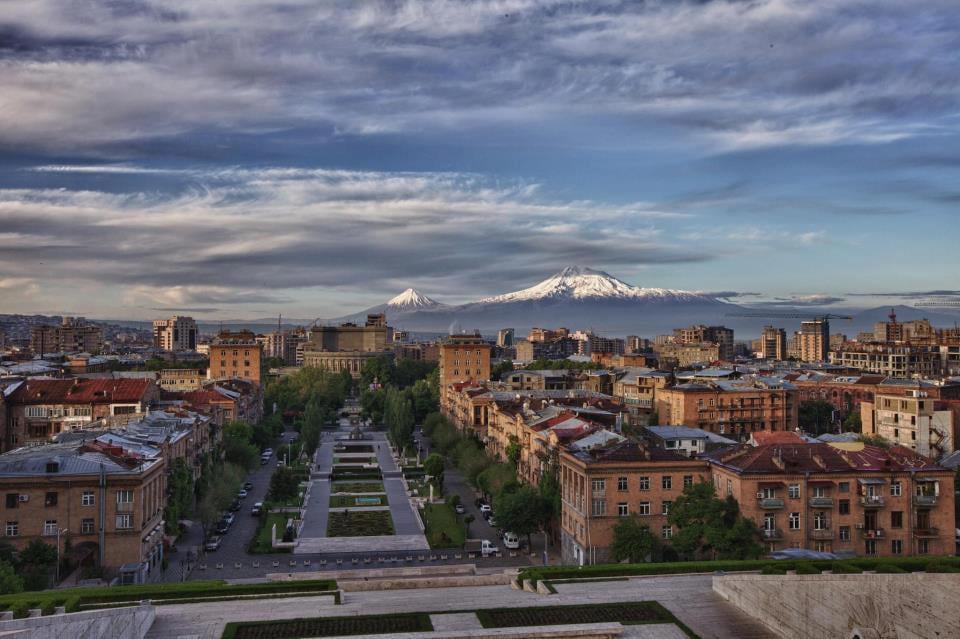
By far the greatest city in Armenia, the capital Yerevan is a great place to start for anyone expecting to explore Armenia. It has a complicated and dramatic history but also has hospitable people who are the treasure of the city and will help discover many impressive and fascinating things to do in Yerevan. Built from the volcanic pink stone tuff, Yerevan is the creation of the dreamer Alexander Tamanyan, who designed modern Yerevan at the beginning of the 20th century. He created a unique city vision with combinations of bohemian and modern styles. The city is home to the grand Republic square while clambering the Cascade to see the city’s monument to Soviet victory in the Second World War is a must.
Yerevan is a deeply historic city and seeing the Armenian Genocide Memorial is a must to understand more about the nation’s troubled past. The vernissage open air market is worth visiting too – it is open at the weekend – while a walk through the Hrazdan gorge is also highly recommended. Much of what Armenia has to offer can be explored during day trips from Yerevan, which is known as the City of Cafes.
2. Lake Sevan
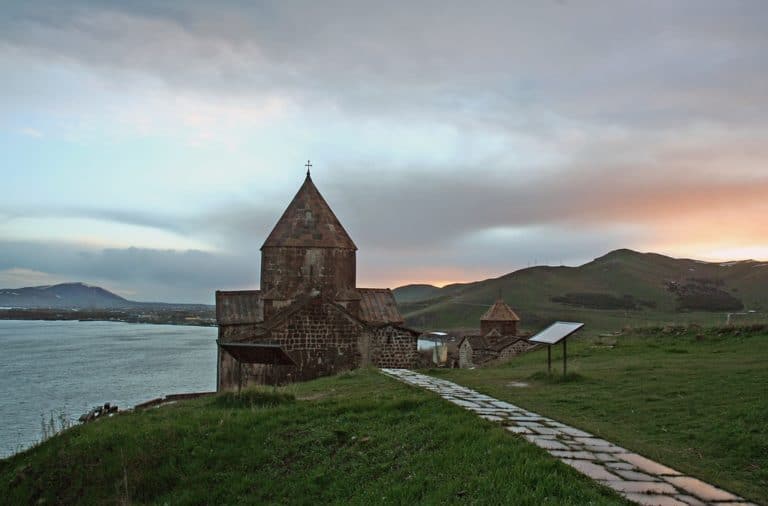
Lake Sevan, found in the middle of Armenia, is the country’s biggest lake and an attractive place to visit during your trip. The lake is surrounded by some gorgeous monasteries – the most unique of them being arguably the Sevanavank Monastery – providing a magnificent scenic backdrop to a relaxing trip. Windsurfing is among the recreation activities available at the lake, which also has a wide choice of fantastic seafood restaurants along its coast. Sevan National Park, is one of the several protected national parks of Armenia, founded in 1978 to protect Lake Sevan and the surrounding areas. Lake Sevan has popular beaches and, as the country has no coastline, this is the best place in Armenia to sunbathe, with Sevan Bay and its surrounding mountains providing spectacular view.
3. Shikahogh State Reserve
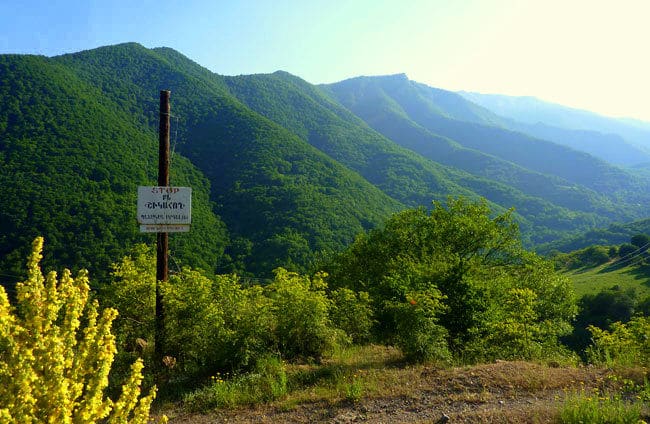
The second largest forest reserve in Armenia, Shikahogh State Reserve is so unspoiled that large parts of it remain unexplored to this day. Shikahogh is the greatest place where the forest stays intact. It is home to unique species considered to be the wealth of not only Armenia but the whole world as well. The Shikahogh State Reserve is home to about 1,100 species of plants, 70 of which have been registered in the Red Book of Armenia and 18 in the Red Book of the Soviet Union. The fauna of Shikahogh has not been fully explored, but studies have already revealed rare species of animals such as bears, leopards, bezoar, snowcock, viper, and hedgehog. The reserve also has a number of very beautiful waterfalls to enjoy.
4. Mount Aragats and Lake Arpi
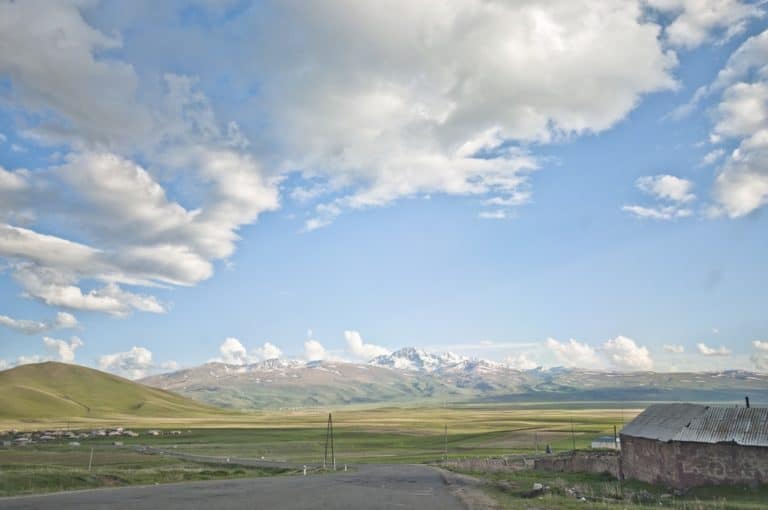
Mount Aragats is one of Armenia’s most attractive sights of Armenia, with the inactive volcano found on the north side of the country.
Multiple engravings have existed around the volcano, including rock paintings illustrating animals and human-like figures in Kasagh River valley possibly of early Holocene age, and in Aghavnatun on the southern side of the volcano including petroglyphs showing animals that were perhaps created in the 4th to 1st millennia BCE. Snow surrounds the peak almost all year-round but Mount Aragats can be climbed, with July, August and September the best times of the year to attempt the hike. The southernmost of the four peaks is the easiest to climb, while the northern peak, at around 4,000 meters, is the most difficult.
While Lake Sevan can be extremely crowded during the peak tourist season, Lake Arpi has a much more cozy feel. Used for irrigation and hydropower production, Lake Arpi is also the source of the Akhurian River. During the winter, it is completely covered by ice. In its waters are found Cyprinus and Varicorhinus. More than 100 species of birds have been observed around Lake Arpi. Lake Arpi has one the largest colonies of Armenian Gull and its recreation activities include camping and walking tours.
5. Dilijan national park
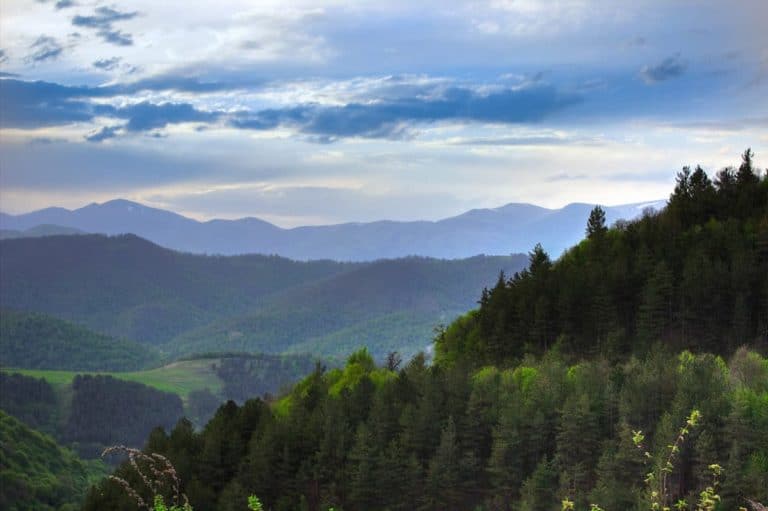
Armenia has 4 national parks and Dilijan national park is the most beautiful of the lovely place for tourists. The park, which was founded in 2002, is recognized for its medicinal mineral water springs, as well as its natural memorials. Many of Armenia’s more important cultural locations can be found within the grounds of the park, such as Haghartsin Monastery (10-13th centuries), Goshavank (12-13th centuries), Jukhtak Vank(11-13th centuries), Matosavank (10-13th centuries), and Aghavnavank (11th century).
6. Noravank
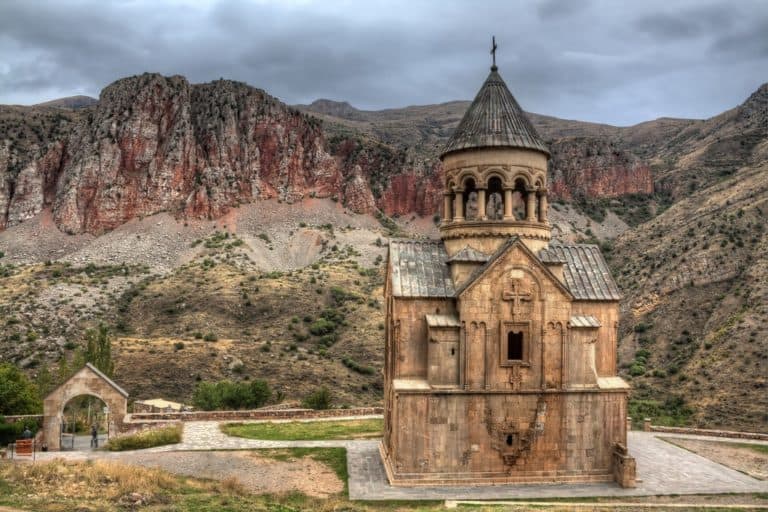
Monasteries are one of Armenia’s defining features and the example at Noravank is one of the most attractive in the whole country. Sheer brick-red ridges shield the monastery, which was built in the 13th century. Noravank was founded in 1105 by Bishop Hovhannes, a former abbot of Vahanavank near the present-day city of Kapan in Syunik. The monastery complex includes the church of S. Karapet, S. Grigor chapel with a vaulted hall, and the church of S. Astvatsatsin (Holy Mother of God). Ruins of various civil buildings and khachkars are found both inside and outside of the compound walls. Noravank was the residence of the Orbelian princes. The architect Siranes and the miniature painter and sculptor Momik worked here in the latter part of the thirteenth and early fourteenth century. If you only choose to go to one monastery during a trip to Armenia, Noravank would be the best selection – thousands of people visit every year.
8. Gyumri
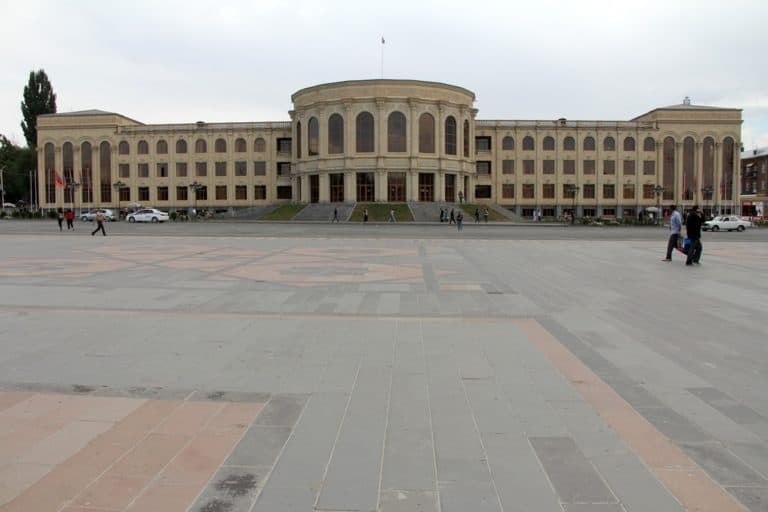
The second-largest city in Armenia, Gyumri is an ancient Armenian city with a dramatic and glorious history. Gyumri is one of the best places you have to visit in Armenia. It is located in the extreme west of the country, near the border with Turkey, on the Shirak plateau. This part of the mountainous country is surrounded by the Shirak and Pambak ranges and the spurs of the Aragats mountain range, the highest in the territory of modern Armenia. The city of Gyumri, second in size only to the capital Yerevan, is the administrative center of the Shirak region.
What to do in Gyumri
- Kumayri historic district: is the old part of Gyumri with its unique architecture. It has more than a thousand buildings dating back to the 18th and 19th centuries. The district is one of few places in the Republic of Armenia, and the world, with authentic urban Armenian architecture. Almost all the structures of the Kumayri district have survived the two major earthquakes in 1926 and 1988 respectively. The historic district of Kumayri occupies the central and western part of modern-day Gyumri.
- Sev Berd or the Black Fortress is an abandoned Russian imperial fortress in Gyumri built between 1834 and 1847
- The monumental statue of Mother Armenia was erected in 1975.
- Vartanants Square is the central town square of Gyumri.
- Independence Square of Gyumri.
- Charles Aznavour Square.
- Garegin Nzhdeh Square.
- Gyumri Central Park, founded during the 1920s on the site of the old cemetery of the city.
- Statue of Avetik Isahakyan (Gyumri)
9. Vanadzor
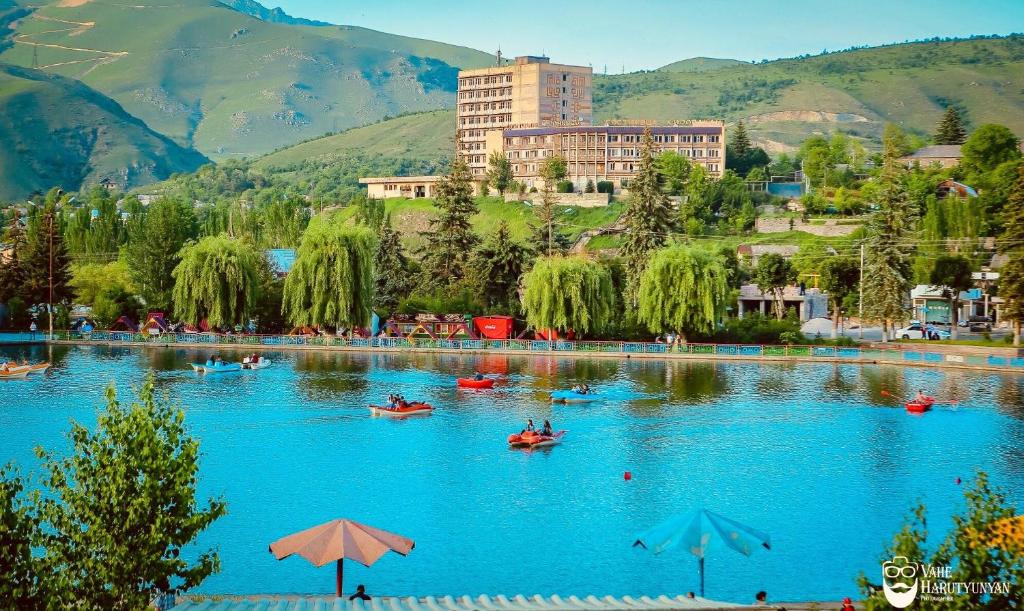
Armenia’s third major city is Vanadzor, which is located in the north of the country. Vanadzor is an ideal base from which to explore the beautiful Lori region, which is certainly one of the best places to visit in Armenia.
On a relatively small territory of the settlement (about 25 sq. km), several clinics specializing in water and mud therapy operate at once. In addition, mineral springs are located within the city: the water in them has a pleasant, mild taste and a balanced composition that normalizes metabolic processes, the functioning of the cardiovascular system and the gastrointestinal tract.
There are not so many sights in Vanadzor: a “black” church built in 1831 on the site of a destroyed ancient monument, an art gallery where exhibitions of pupils of the local art school are periodically organized, opera and puppet theaters. The most interesting and exciting objects are concentrated in the vicinity of the city. These include the monastic complexes of Haghpat, Sanahin and Haghartsin, the Sanahin bridge and the monasteries of Khorakert, Makaravank and Nor-Getik.
10. Amberd Fortress
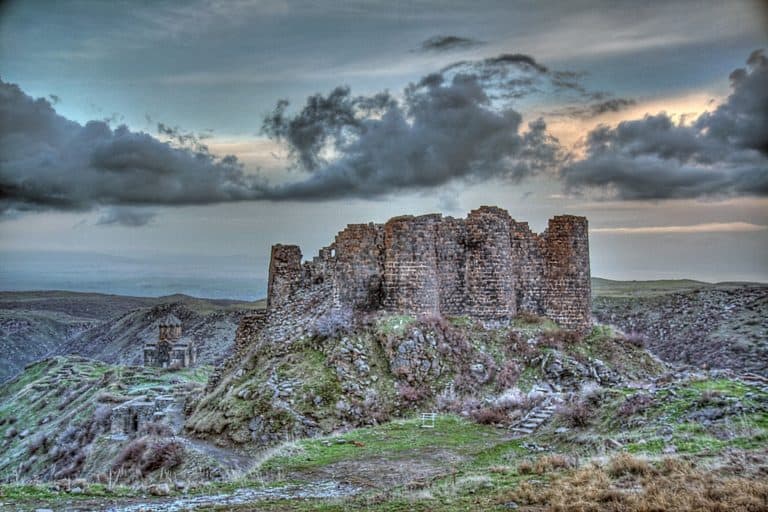
Amberd Fortress is a historical complex on the slope of Mount Aragats in Armenia from a castle of the 7th century and a church of the 11th century. Amberd is located at an altitude of 2300 meters above sea level.
It is assumed that Amberd Castle was founded by the princes of Kamsarakan, then the castle passed into the possession of the Armenian commander Vahram Pahlavuni. Later, it was bought by Armenian rulers from the Bagratuni dynasty, who turned the castle into the main outpost of their kingdom.
For the first time, the castle was captured by the Seljuk Turks in the XI century, in the XIII century the castle was finally destroyed by the Mongols in 1236.
11. Tsaghkadzor

Armenia’s mountainous scenery makes it perfect for winter sports and the country’s best ski resort can be found at Tsaghkadzor in the heart of the country. Ski lifts are paid for by the ride and are among the most affordable in Europe. Tsaghkadzor boasts some of the finest hotels in the country, while the resort also has one of the nation’s biggest entertainment centers in the form of the Senator Royale casino complex. Tsaghkadzor also has the Kecharis Monastery, which is one of Armenia’s most important religious compounds, dating back to the start of the 11th century.
12. Geghard Monastery
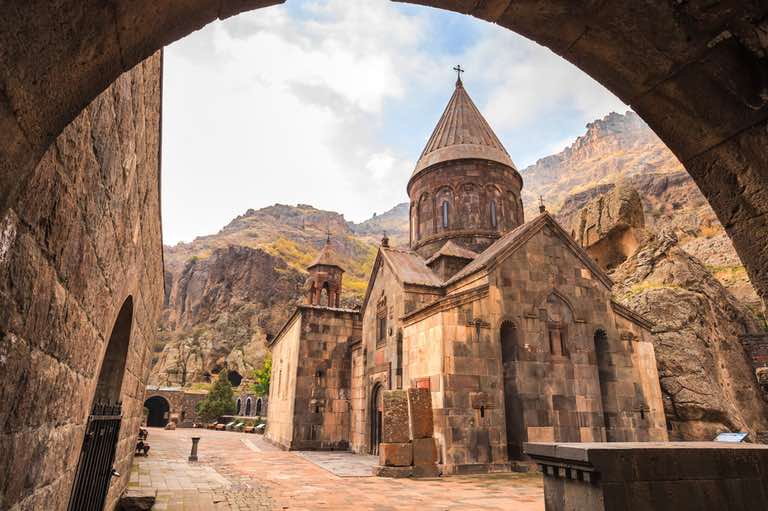
Geghard or Geghardavank, is famous for its rock architecture. The sign of the way to it is the figure of a lioness on a high pedestal at a sharp turn in the road, which unexpectedly opens up a view of the monastery. The monastery complex is really carved out of a granite monolith of rocks. But only half: the deep rocky mountain gorge of Geghard in this place is covered with natural grottoes and caves, which in ancient times served as the cells of the monastery.
The central buildings of the monastery are surrounded by a powerful fortress wall, they consist of the main church – Katoghike, two intra-rock churches – Avazan and St. Mother of God, the tombs of princes. In the monastery fence there are household and residential premises, cells, a refectory. On the territory of Geghard there is also a spring with clean water, which is revered as sacred. Behind the monastery fence is the oldest building – the semi-cave church of St. Gregory of the 12th century, as well as many khachkars, which the monks cut right into the rocks. Everywhere in the vicinity of Geghard, trees are hung with multi-colored ribbons for the fulfillment of desires.
The rich decoration of temples and cells, skillfully decorated with ornaments and bas-reliefs, the tombs of members of aristocratic families and other masterpieces of underground architecture, brought Geghard the well-deserved fame of one of the most significant monuments of human history, included in the UNESCO World Heritage List.
13. Karahunj Observatory
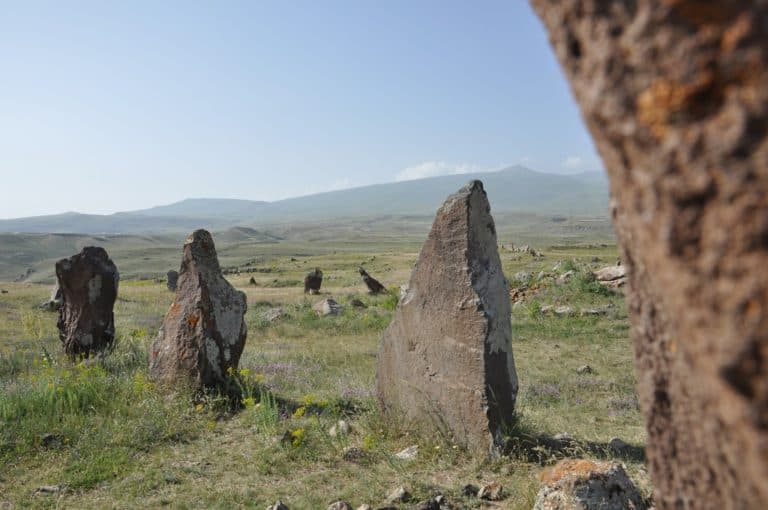
On the territory of Armenia there are many prehistoric monuments, monasteries, remnants of the life of ancient civilizations living in the region. However, the most mysterious and exciting fantasy and interest of both historians and scientific researchers is the Karahunj megalithic complex (talking stones), in Armenia they are also called Zorats Karer (mighty stones or stones of power).
Even though there are many arguments and theories around the meaning of the monument, Karahunj is indeed a majestic and mystical place that you should visit while in Armenia.
14. Khor Virap
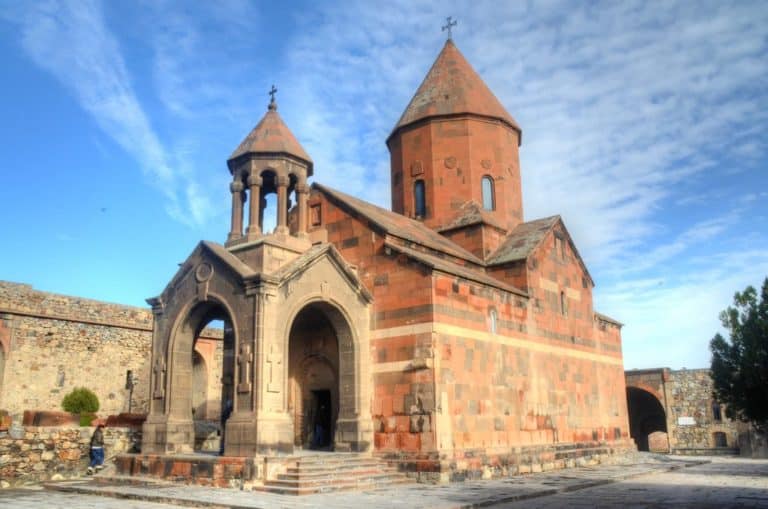
The ascetic and solemn beauty of the Khor Virap (“deep dungeon”) monastery is the main thing that attracts tourists to the vicinity of the ancient capital of Armenia, the city of Artashat. Located on a rock in the middle of a wide plain, Khor Virap, like a vigilant guard, guards the serene peace of the snow cap of Ararat, rising a little further away. For the whole of Armenia, the Khor Virap Monastery is a significant historical place, because it was here in 301 that the ruler of the country converted to Christianity, making it the state religion. Today in Khor Virap you can visit the Church of the Holy Mother of God, go down to the underground prison where St. Gregory the Illuminator was kept, admire the peak of Ararat melting in a blue haze and participate in the ceremony of releasing white doves.
15. Ruins of Ancient Dvin
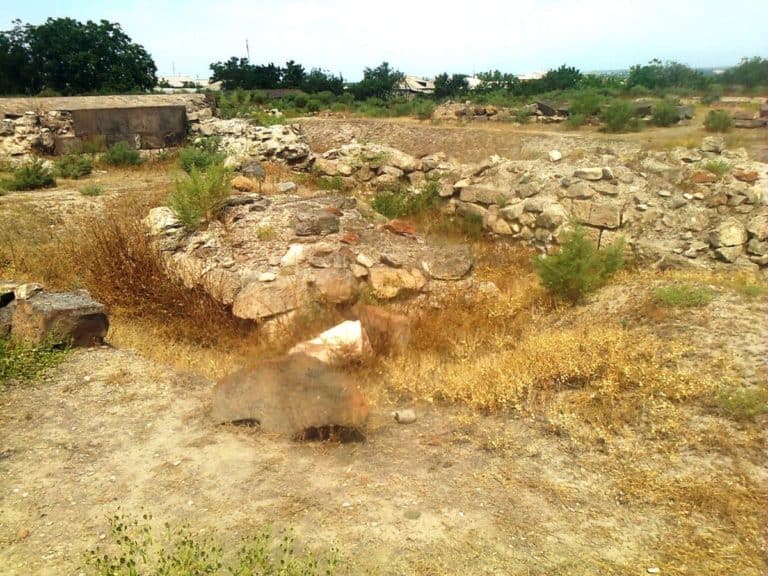
Our final selection for the best places to visit in Armenia is Dvin, one of the country’s oldest cities – in fact, it was the capital of Armenia in medieval times. 35 kilometers south of Yerevan is Dvin – the center of transit trade in medieval Armenia and the capital city in the region of the same name in the province of Ayrarat. Its name has Persian roots and is translated as “hill”. Archaeological research carried out since 1937 has provided important material on the culture, customs of medieval Armenia in the 5th – 8th centuries. The remains of the courts of the Armenian rulers built after the second earthquake have been discovered on the territory of the excavations. Fragments of palace structures were found under them. built much earlier in the 4th – 5th centuries. In the central part of the city are the ruins of a cathedral dating from the 7th century, which was rebuilt in the 7th century from a pagan temple from the 3rd century.
